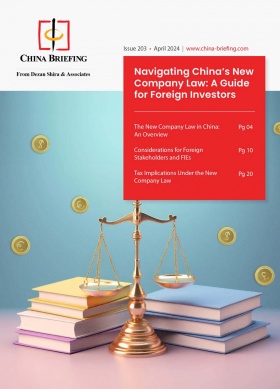China July 2024 Economy: Consumption and Trade Surge Amid Sluggish Industrial Growth
The National Bureau of Statistics has released July 2024 economic data for China, revealing a nuanced economic landscape. Industrial output experienced a deceleration, with growth slowing compared to previous months. However, this was offset by a notable surge in consumer spending and foreign trade.
China’s National Bureau of Statistics (NBS) has released the economic data for July 2024, providing a detailed view of the country’s industrial, retail, and investment performance. The figures reveal a mixed economic landscape, with retail sales exceeding expectations, yet industrial production falling short of forecasts. The continued expansion of consumer spending indicates growing domestic demand, despite persistent challenges in the real estate sector and fixed asset investments.
As the Chinese government focuses on boosting domestic demand, the challenge of maintaining economic momentum amidst structural adjustments and external uncertainties remains a significant concern moving forward.
China’s economy and society in July 2024 at a glance (yearly growth rates):
- GDP: around 4%
- Value added of industrial enterprises above the designated size*: +5.1% Y-o-Y
- Value added of services: +4.8% Y-o-Y
- Total retail sales of consumer goods: RMB 3,775.7 billion (US$5 billion), +2.7% Y-o-Y
- Total import and export: RMB 3,675.8 billion (US$ 514.54 billion), +6.5% Y-o-Y
- Fixed asset investment: RMB 28,761.1 billion (US$4,026.04 billion); +3.6% Y-o-Y
- Disposable income per capita: RMB 20,733 (US$2,907); +5.4%
- Unemployment rate: 5.1%; -0.2% Y-o-Y
- CPI: 0.5% Y-o-Y
*Added value of companies with an annual main business income of over RMB 20 million (US$2.8 million)
Industrial growth slows but maintains a steady pace
In July, China’s industrial sector experienced a slight deceleration in year-on-year growth compared to the previous month, with industrial value-added increasing by 5.1 percent. Although this represented a 0.2 percentage point slowdown from June, it still indicated solid performance.
Equipment manufacturing played a crucial role in stabilizing overall industrial growth. The sector’s added value increased by 7.3 percent from the previous year. Moreover, certain high-tech and electronic equipment manufacturing sectors exhibited particularly strong performance:
- High-tech manufacturing: 10 percent year-on-year growth.
- 3D printing equipment production: 3 percent year-on-year growth.
- New energy vehicles: 8 percent year-on-year growth.
- Integrated circuits: 9 percent year-on-year growth.
Intellectual property-intensive industries and core digital economy sectors also saw substantial growth, with revenues increasing by 9.6 percent and 9.5 percent year-on-year. Additionally, the impact of policies promoting industrial equipment upgrading became evident. Equipment purchases by enterprises grew by 8.5 percent, with significant increases in the industrial and transportation sectors.
Notably, private companies continued to outperform state-owned enterprises (SOEs), with value-added output increasing 5.2 percent year-on-year, compared to 3.5 percent for SOEs. Value-added output of foreign-invested enterprises (FIEs), meanwhile, grew 4.2 percent year-on-year.
Service sector continues to recover
In July, the service industry in China exhibited a mixed but generally positive performance.
The services production index rose by 4.8 percent year-on-year in July, an improvement of 0.1 percentage points from the previous month.
Statistics bureau spokesperson Liu Aihua said China’s tourism sector remained robust. Between July 1 and August 12, rail travel in China surged by 6.1 percent year-on-year, reaching 605 million passenger trips, according to data from China Railway, the state-owned national railway operator.
According to CNBC, this increase puts the country on track to surpass last year’s record of 830 million rail trips for the entire July-August period, based on CNBC’s analysis of official figures.
This surge in holiday travel and leisure activities positively impacted transportation, warehousing, postal services, accommodation, and catering industries.
Overall, several service industries recorded healthy growth in July:
- Information transmission, software, and IT services: 12.6 percent year-on-year increase.
- Leasing and business services: 9 percent year-on-year increase.
- Transportation, warehousing, and postal services: 5.3 percent year-on-year increase.
- Financial services: 5,1 percent year-on-year increase.
Between January and July, the services production index increased by 4.9 percent year-on-year; meanwhile, from January to June, the revenue of service enterprises above a designated size grew 7.2 percent year-on-year.
The business activity index for the service sector stood at 50 percent, indicating a steady level of activity with no significant expansion or contraction. This figure reflects stability within the industry, suggesting that the sector maintained a balanced state of operations during the month.
However, the business activity expectation index for the service sector was notably higher at 56.6 percent, signaling optimism about future conditions. This higher index suggests that businesses within the service industry anticipate improved conditions and increased activity in the near term.
A closer examination of sub-sectors reveals that several areas within the service industry experienced robust performance. Specifically, the business activity indexes for railway transportation, air transportation, postal services, telecommunications, radio and television, satellite transmission services, as well as culture, sports, and entertainment, all registered above 55 percent.
This indicates that these sectors are operating in a high prosperity range, reflecting strong growth and demand.
For instance, the high readings in transportation and communication services imply a thriving environment in these critical infrastructure areas, while elevated indexes in culture and entertainment suggest a healthy recovery or expansion in consumer-driven services.
Retail sales rebound, consumer inflation slightly improves
Total retail sales of consumer goods reached RMB 3.77 trillion (US$528.33 billion) in July, up 2.7 percent year-on-year, marking an acceleration from the 2.4 percent growth recorded in June. During the first seven months of 2024, total retail sales of consumer goods reached RMB 27.37 trillion (US$3.83 trillion), up 3.5 percent year-on-year.
Key highlights include:
- Urban retail sales: 2.4 percent year-on-year increase.
- Rural retail sales: 4.6 percent year-on-year increase.
Sales of lifestyle products saw notable growth, including sports and entertainment goods (10.7 percent) and communication equipment (12.7 percent).
Online retail sales continued to grow robustly, reaching RMB 8.37 trillion (US$1.17 trillion) in July, an increase of 9.5 percent year-on-year. Specifically, online retail sales of physical goods reached RMB 7 trillion (US$979.49 billion), up 8.7 percent year-on-year, accounting for 25.6 percent of total retail sales during this period.
The growth rate of retail sales of services was 4.4 percentage points higher than that of the retail sales of goods in July.
Between January and July 2024, retail sales of services increased by 3.5 percent year-on-year.
Inflationary pressures were present in various sectors of the economy in July 2024, with the national consumer price index (CPI) increasing by 0.5 percent year-on-year, 0.3 percent higher than June’s rate.
Grouped by commodity categories, prices for food, tobacco, and alcohol went up by 0.2 percent year-on-year. Of this, pork and fresh vegetable prices rose by 20.4 percent and 3.3 percent year-on-year, respectively.
By category, the price changes in July were as follows:
- Food, tobacco, and alcohol: prices increased by 0.2 percent year-on-year.
- Clothing: prices saw a rise of 1.5 percent year-on-year.
- Housing: prices edged up by 0.1 percent year-on-year.
- Daily necessities and services: prices went up by 0.7 percent year-on-year.
- Transportation and communication: prices decreased by 0.6 percent year-on-year.
- Education, culture, and entertainment: prices grew by 1.7 percent year-on-year.
- Medical care: prices increased by 1.4 percent year-on-year.
These variations reflect a diverse inflationary landscape across different consumer categories, with notable increases in areas such as education and healthcare, contrasted by a decline in transportation and communication costs.
Core CPI, excluding food and energy prices, rose by 0.4 percent year-on-year.
Growth in fixed asset investment moderates
In the first seven months of 2024, China’s fixed asset investment (FAI) (excluding rural households) reached RMB 28.76 trillion (US$4.08 trillion), reflecting a 3.6 percent year-on-year increase, slightly down by 0.3 percentage points from the first half of the year.
When excluding real estate development, the FAI grew by 8.0 percent year-on-year.
By sector, infrastructure investment increased by 4.9 percent year-on-year, manufacturing investment rose significantly by 9.3 percent, while real estate development investment declined sharply by 10.2 percent. Noteworthy growth was observed in high-tech industries, where investment surged by 10.4 percent year-on-year, with high-tech manufacturing and high-tech services growing by 9.7 percent and 11.9 percent, respectively.
Investment in sub-sectors such as aerospace vehicle and equipment manufacturing, as well as computer and office device manufacturing, grew by 37.7 percent and 10.8 percent, respectively. Additionally, investments in professional technical services and e-commerce services saw strong growth of 25.4 percent and 17.9 percent, respectively.
However, in July alone, FAI saw a slight month-on-month decline of 0.17 percent.
Foreign trade surges, import beats forecasts
In July 2024, China’s foreign trade demonstrated significant growth, with total trade volume at US$516.46 billion, marking a 7.1 percent year-on-year increase.
Exports in dollar terms grew by 7 percent year-on-year, although this was below the expected 9.7 percent. The figure was also lower than the 8.6 percent growth registered in June.
Meanwhile, dollar-denominated imports exceeded expectations, rising 7.2 percent year-on-year, far more than the forecasted 3.5 percent expansion.
|
Foreign Trade, July 2024 |
|||||
| Total Value (US$, billion) | Export (US$, billion) | Import (US$, billion) | July Total Growth (Y-o-Y) | July Export Growth (Y-o-Y) | July Import Growth (Y-o-Y) |
| 516.46 | 300.56 | 215.91 | 7.1% | 7% | 7.2% |
| China’s General Administration of Customs (GACC) | |||||
Overall, throughout 2024, China has experienced a remarkable rebound in trade—particularly driven by exports—despite a challenging global environment. Notably, China’s imports from the US surged by 24 percent year-on-year in July, while imports from the ASEAN region and the European Union rose by 11 percent and 7 percent, respectively. Notably, ASEAN remains China’s largest trading partner, with exports to this region growing by 12 percent year-on-year.
This growth was driven by strong performance in key sectors, such as a 26 percent year-on-year increase in car exports (with 553,000 vehicles), a 17 percent rise in home appliance exports, and continued strength in smartphone exports.
Additionally, China’s imports of crude oil and natural gas increased by 8 percent and 6 percent respectively year-on-year.
A key highlight of the first seven months of 2024 has also been the rapid growth of China’s exports in sectors like shipbuilding and integrated circuits. For instance, exports of electromechanical products, which make up nearly 60 percent of the total export value, saw a year-on-year increase of 8.3 percent, with integrated circuits alone growing by 25.8 percent. The Yangtze River Delta (YRD), Pearl River Delta (PRD), and Beijing-Tianjin-Hebei (Jing-Jin-Ji) regions remain pivotal in the integrated circuit industry, underscoring the significance of technological innovation and market expansion.
Additionally, cross-border e-commerce showed impressive momentum, with a 10 percent increase in trade during the first half of the year, surpassing the overall foreign trade growth rate.
July’s positive trade momentum in China is driven by a combination of factors, including rising overseas demand and the anticipation of a global interest rate cut cycle. Additionally, the 2024 Paris Olympic Games have significantly contributed to the increased demand for ‘Made in China’ products, ranging from sports equipment and souvenirs to a variety of other goods.
These advancements indicate China’s ongoing economic expansion, reinforcing expectations of stronger growth in the third quarter of 2024. With foreign trade surging and imports exceeding forecasts, economists now project that China’s GDP could grow by around 5 percent in the third quarter (Q3 2024), building on the 4.7 PERCENT year-on-year growth recorded in the second quarter (Q2 2024) of the year.
This upward momentum reflects the resilience of China’s economy, driven by robust trade performance in key sectors and strategic market diversification. As trade remains a crucial indicator of economic health, the positive July data suggest that China is on track to accelerate its economic recovery and achieve stable growth amid global uncertainties.
Conclusion
Key takeaways from China’s July data highlight a nuanced economic landscape. On the positive side, retail sales and online goods sales demonstrate an emerging recovery in consumer demand. However, the persistent weakness in the real estate market and slower industrial output suggest that structural and external factors are still impacting economic momentum.
The mixed signals from July’s statistics indicate that while China is navigating its economic transition with incremental gains, achieving sustained growth will require addressing both immediate weaknesses and fostering longer-term stability. The focus on consumption and incremental policy adjustments will be crucial in balancing these dynamics and steering the economy towards its annual growth targets.
About Us
China Briefing is one of five regional Asia Briefing publications, supported by Dezan Shira & Associates. For a complimentary subscription to China Briefing’s content products, please click here.
Dezan Shira & Associates assists foreign investors into China and has done so since 1992 through offices in Beijing, Tianjin, Dalian, Qingdao, Shanghai, Hangzhou, Ningbo, Suzhou, Guangzhou, Haikou, Zhongshan, Shenzhen, and Hong Kong. We also have offices in Vietnam, Indonesia, Singapore, United States, Germany, Italy, India, and Dubai (UAE) and partner firms assisting foreign investors in The Philippines, Malaysia, Thailand, Bangladesh, and Australia. For assistance in China, please contact the firm at china@dezshira.com or visit our website at www.dezshira.com.
- Previous Article Rückführung von Gewinnen aus China
- Next Article Chinas Doppelbesteuerungsabkommen
























